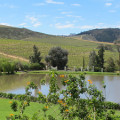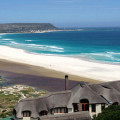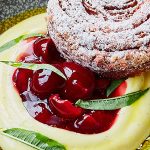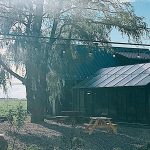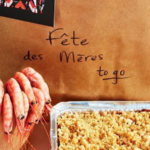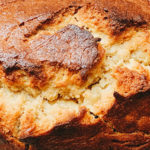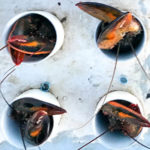I just got back from an unforgettable trip to South Africa. My first week there was spent at Kruger National Park, located in the northeast part of the country. It’s almost 20,000 square kilometers and bordered by Zimbabwe to the North and Mozambique to the East. Did I mention that it’s almost 20,000 square kilometers? That’s the size of Israel, in case you were trying to picture how large this natural reserve is! It was established in 1898 to protect the South African wildlife. Kruger is home to an impressive number of species: 336 trees, 49 fish, 34 amphibians, 114 reptiles, 507 birds and 147 mammals, all of which are yours to spot as long as you have a good eye (look, over there, there’s a bird in a tree!) and a pair of binoculars.
I was fortunate enough to be traveling with a friend who is from South Africa and who spent 6 years of his life working at Kruger. If you don’t have such a friend in your repertoire, you can benefit from my experience to plan a trip there. Here’s what we did. After landing in Johannesburg, we rented a car and headed to the nearest supermarket. You will need to buy supplies for your stay at Kruger if you want to self-cater like we did. You can also stay at camps that have restaurants on site but I cannot say much about the quality of the food there. Cooking is made easy since each self-catering accommodation inside the park comes with a fully equipped kitchen as well as a braai (the Afrikaans word for barbecue) and the preferred national cooking method. Some of the larger camps inside the park have stores where you can buy basic supplies so don’t fret if you forget some things or don’t buy enough. If you head to Kruger from Johannesburg, you will most likely go through Nelspruit or Hazyview, where you can stock up just before you go into the park. If you enter the park further north, go through Phalaborwa where you can also stock up.
We then proceeded on the beautiful drive east to Kruger. If you don’t think you can make the 5 to 6-hour drive before the park’s gates close, I advise you to either call ahead and let them know you’ll be arriving late or arrange to stay outside the park for the night. There are daily flights from Johannesburg and Cape Town to small airports around Kruger which you might want to consider. Once you arrive at your camp, settle down, place the food in the iron-clad outdoor fridge (to prevent the baboons from getting in it) and start exploring! Of course, there are more “all-inclusive” ways of doing this, like high-luxury camps that will take care of all your needs but I bet they are not as much fun! You can find info on all of this on the Kruger National Park website along with info on backpacking trails (several days and nights), guided walks, sunset games drives, mountain biking and golfing in non-fenced area (your game better be good, you don’t want to hit a curious elephant with your ball).
I spotted my first animal at 2 A.M. on my first night at Kruger. We weren’t even inside the park yet but at Sabie River Bush Lodge, a private camp just outside the Paul Kruger gate. Jet lagged had me up and when I peered outside my tent at the river bed below, a hippo was happily traipsing about in the moon light. I cannot even tell you how excited I was! Spotting your first animal in the park – which statistically speaking will most probably be one of the 150 000 impalas – is absolutely exhilarating! You’ll quickly learn that impalas are a dime a dozen and spotting one will become somewhat boring after a while. However, spotting any of the other 147 mammals never grows old because each sighting is different. A herd of elephants might have a few babies in it (nothing is cuter than baby ellies!), a huge male with impressive tusks or an impertinent teenager threatening to charge your car (true story!). A couple of male giraffes might be “necking”, that’s fighting, not making out. A warthog might be followed by little baby pumbas running in the grass with their tails high up. A group of baboons and their tiny pink-faced babies clinging tightly to their mamas might come dangerously close to the car (close your windows!). A herd of zebras with cute striped babies might be crossing the street right in front of your car or you might get stuck in the middle of a herd of thousands of buffaloes (also a true story). All this to say that no two sightings are the same but nothing, nothing is more exciting than spotting your first big cat, which seemed to have been the ultimate goal of every game drive we went on. Our first big cat was a majestic leopard that gracefully granted us a couple of minutes of unobstructed viewing before staring us down then disappearing into the tall grass with a flick of its white-tipped tail. It would take another 3 days (!) before we finally had our second big-cat spotting, this time a pride of lions lazily basking in the sun on the shores of the river. We saw lions a few more times after that and every single time was awe-inspiring! I wanted to tuck a baby lion into my backpack and bring it home to my two felines but apparently, that’s against the rules so, so much for that (I’m just joking, of course!).
Our days at Kruger consisted of waking up at around 5 A.M. and enjoying an African sunrise over the bush before heading out for an early morning drive, from about 6 A.M. to 10 A.M. We would snack in the car while driving then stop by at a picnic spot or rest camp for a late breakfast/early lunch. We would then head back to camp where we would rest for a couple of hours before heading out again at around 3 P.M. until the gate-closing time of 6 P.M. In the evening we would braai and enjoy an early dinner with a good bottle of South African wine then go to bed early so we can do all again the next day. We would fall asleep to the sound of the bush, the calls of hippos, elephants and hyenas, lions roaring in the distance and frogs croaking on our front porch.
I know it sounds a bit cliché and that South Africa is not considered the “real” Africa by some but a visit there changes you. These animals roaming free are majestic and absolutely awe-inspiring. One feels small and yet part of something so much bigger than our individual lives. You drive out of the park on your last day there with a sense of regret and an immediate sense of nostalgia for the time you spent there. The animals inhabited our dreams for days afterwards and although we were visiting a ton of interesting things in the western part of the country, we missed them. I still do.
Visiting the Kruger National Park website may seem a bit overwhelming. The park has 21 rest camps, as well as 2 private lodge concessions, and 15 designated private safari lodges. We stayed at Satara in a bungalow a few feet from the fence where hyenas liked to take walks at night, at Biyamiti in a 2-bedroom cottage along the river where elephants took turns taking mud baths and at Lower Sabie in a safari tent along the Sabie River where we could hear and see hippos and buffalo just outside the tent.

Our tent at Sabie River Bush Lodge / Our 2-bedroom cottage at Biyamiti / Our tent at Lower Sabie / Braai cooking and making brunch on a skottel
Before you go:
- Make sure you get all the appropriate vaccines and medication. Kruger is in a malaria-prone zone so you’ll want to get some meds that will prevent you from contracting it. I got typhoid and tetanus shots and was prescribed Malarone for malaria. Go to a travel clinic where they’ll be able to advise you. If you’re in Montreal, I recommend Clinique Santé Voyage where I had great service.
- Do not travel to Kruger without packing some mosquito repellent for the same reason as above: malaria. Douse yourself generously in it as soon as night falls to avoid being bit. You can pick some up at the first camp you encounter when you enter the park. You may also want to bring some lotion for insect bites.
- Bring the appropriate clothes. You can wear pretty much anything you like while on the drive during the day but it is best to dress in loose, long sleeved (and long pants), light-coloured clothes at night. It’s another way of preventing mosquito bites.
- Bring sunscreen lotion and a hat. It’s amazing how much sun you can get even if you spend the better part of the day driving around.
- If you’re planning to drive, get your international driving license done. If you’re in Montreal, you can get it done in minutes at the CAA Travel Center in downtown Montreal. Beware though that the driving is done on the left side of the street, which can be a tad confusing.
- Bring a good pair of binoculars with you (ours were 8.5 x 32). They will allow you to observe animals that might be just a bit too far to see clearly.
- Book your accommodations inside the park very early on since these can be booked up to a year ahead!
- Plan your drives wisely. The point is not to cover as much land as possible especially since that doesn’t necessarily guarantee more animals sightings. Early mornings and late afternoon drives are the most successful since animals tend to be more active then. We “only” covered a little over the lower third of the park in the 4 nights and 5 days we were there, so about 750km. There are a few suggested self drive routes here.
- Late September to mid-October is probably the best time to visit for several reasons: it’s spring and the rainy season (summer) hasn’t started yet; the temperatures are still mild so the animals (and you) are not too hot to be wandering about; the grass is still short and dry which constitutes ideal conditions to spot as many animals as possible; the humidity level is low, which lowers the chances of getting bit by a malaria-carrying mosquitoes.
- Other things to pack: a flashlight, a medical kit, a waterproof jacket, a sweater (nights tend to be cool), running shoes, a camera with a zoom lens if possible, coffee if you’re an addict like I am (I purchased a French press to use there), a good book, soap (towels and linen are provided) and any other medication or toiletry you think you may need.
While you’re there:
- The park gates open very early (anytime between 4:30am and 6:00am depending on the season) and you need to be on the road as soon as they open to increase your chances of spotting animals since they are usually active then. If you are not a morning person (and I am not) you will have to become one and it will be worth it.
- Pick up a park brochure as soon as you drive in. It will help you recognize which animals you are spotting. You can also print a checklist of the park’s 147 mammals to check off.
- There are picnic spots and rest areas available throughout the park where you can rent gas skottels (a cross between a wok and a barbecue) to cook your breakfast or lunch.
- Main rest camps all have stores where you can purchase souvenirs as well as necessities such as basic provisions, charcoal for your braai, mosquito repellent and memory cards for your camera!
- Besides a bank (only open Monday to Friday and Saturday morning) at Skukuza and an ATM at Skukuza and Letaba camps, no cash withdrawal facilities are available in the park, so do bring some cash with you. However, credit cards are accepted everywhere.
- Even though it may say that WiFi is available at the camps, expect to be completely disconnected for the whole time you’re there. Don’t panic, the world (and its problems) will still be there when you get out so enjoy the moment.
- Checking in time is 2 P.M. and checking out is 10 A.M.
- Respect the rules, especially when driving around the park. Remember that this is the animals’ domain and that you are just visiting. Don’t go over the speed limit, never get out of your car (unless in clearly designated areas), don’t feed or tease the animals, I really don’t think you want any of them – even the cute and inoffensive looking ones – to get pissed off at you. Don’t litter. Respect the gates’ closing times (between 5:30 P.M. and 6:30 P.M. depending on the season) unless you want to be heavily fined or stranded in the wilderness with the animals.
These are the two Kruger websites we consulted before leaving, this one and this one.
All photos by mrb404. You can check out some more photos of my time at Kruger on my Facebook page here.






